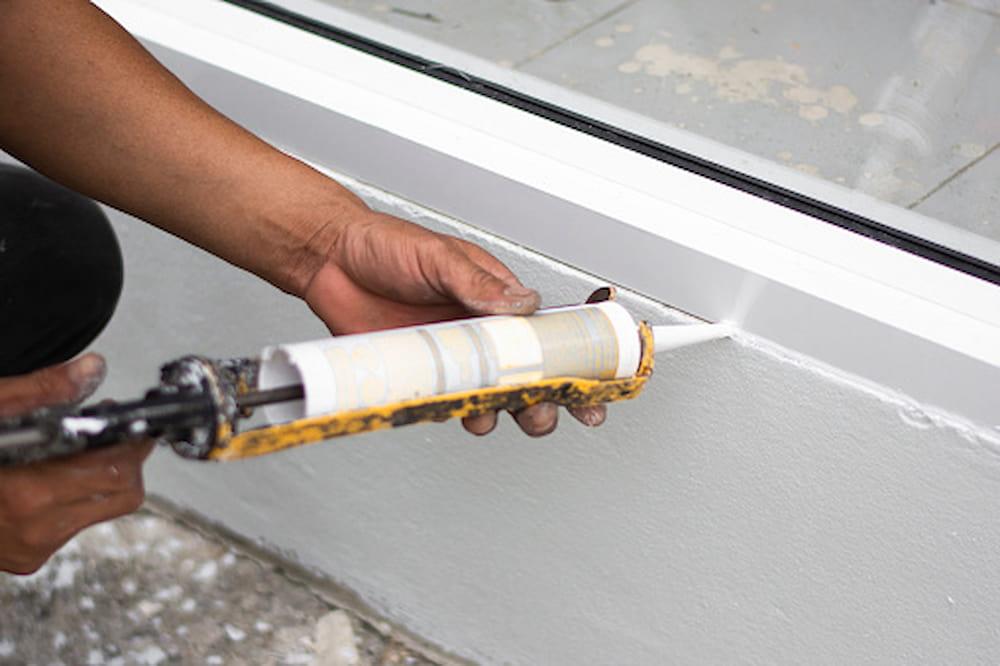What Does a uPVC Window Seal Do?
Before we jump into what a uPVC window seal does, it is important that you have a brief understanding of what exactly a window seal is. A uPVC seal is the type of seal on uPVC windows. Moreover, window seals are used to hold the air between the panes of glass.
There are so many parts to a window that can be confusing, however, we are here to help so you can rest assured- you are in the right place! A window seal can also be referred to as a window gasket. Gasket seals and door seals are essential because they help to prevent any draughts and water from entering your home.
When moisture enters your home through windows and doors, mould can start to form and your house may feel damp and cold. This is a common problem in many households, so it is important that you can spot when your window seals need replacing. For more information, read on!
Benefits of a uPVC Window Seal
There are many benefits of a uPVC door or window seal, whether it’s preventing noise from entering your home or any air from escaping or entering through the window seals, the benefits are endless.
Heating and gas prices have risen for most, which is why it is important that you save money on your energy and gas bills wherever possible. The main cause of draughts throughout homes is almost always due to your window seal not being airtight. Even if you have double-glazing, you are still susceptible to window seal failure.
Not only does a rubber gasket improve efficiency and save you money on your heating bills, but it also increases comfort, reduces allergens and bugs in your home and expands the life expectancy of your windows.
In the summer, pollen levels can be extremely high, which is why most of us stay indoors during the days of high pollen. However, if your window gasket seal isn’t tight enough, this can increase the risk of dust and pollen entering your home.
Rain and snow are quite common in the winter and cold periods. If your window seal needs to be replaced, this can increase the chances of moisture becoming trapped in your windows.
Over time, this can lead to the growth of black mould (a type of mould that can be extremely harmful to children). Black mould is the main cause of allergic rhinitis, asthma and persistent headaches. This is why it is essential to ensure that your window gaskets are sealed correctly and you sort a replacement when necessary.
What Type of Seals Are There?
There is a wide range of different types of seals that are all used for the same purpose, however, some are used in different places. For example, groove seals are made for pre-made groves in windows, whereas self-adhesive seals are used for the easy installation of window seals.
One of the most commonly used sealants in the UK is the silicone sealant. This is due to the many benefits that accompany it. For example, silicone sealants are UV stable, temperature resistant and they are waterproof, which makes them excellent for sealing around showers, bathtubs and kitchen windows.
Most window gaskets are easy to fit and offer effective window seal protection against harsh weather conditions. Some other types of sealants include bubble gaskets and wedge gaskets. Both of these sealants are easy to fit and help efficiently seal your windows, preventing any rain or draughts from entering.
Wedge gaskets are a popular type of seal for people who are interested in effective window seal replacements. This type of gasket comes in a range of different shapes and sizes and is pushed into the gap allowing for a tight seal.
A common window seal that is found on uPVC windows is an E gasket. This type of seal works just as well as any other type of sealant. E gaskets are fitted to your window to ensure a tight seal between the window frame and glass.
When to Replace Your Window Seal
In order for your window to last long and provide effective insulation properties, it should have a tight seal and there should be no air seeping through. There are many signs to look out for that indicate your windows need to be replaced.
Firstly, look out for foggy windows. This can easily be mixed up with condensation, which is why it is essential that you know how to differentiate between the two. Foggy moisture that shows in-between glass panes indicates that the seal is broken. This occurs when moisture gets trapped in between the panes.
However, if it is just condensation on your windows, check out this blog on how to prevent double-glazing condensation.
Another key thing to look out for is damaged window frames. If you take time to inspect your window and you spot black mould, peeling/bubbled paint or signs of weather damage, your window seal is most likely failing.
Finally, keep an eye out for irregular temperatures. If you feel like you are constantly needing to wrap up and put on those extra layers to keep warm (especially in the summer), then your window seal may need to be replaced. Doing this also saves you money in the long run as you are not wasting money on heating bills when this can be easily avoided.
GGR Glass
Here at GGR Glass, we offer a wide range of glazing sealant finishing tools to allow for the perfect finish of your window seals. From mastic sealant finishers to angular sealant finishers and more! We have everything you need in one place. Without sealant tools, you are more likely to experience unwanted leakages which can lead to damp patches.
This is why we believe that sealant finishing tools are essential if you want a perfectly smooth finish. If you would like more support or advice, don’t hesitate to contact us at 0161 683 2580. We are more than happy to help!





